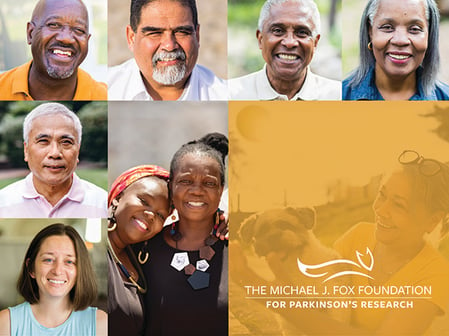• July 11, 2023


According to the Centers for Disease Control and Prevention (CDC), among the top ten leading causes of death in the United States per year are diseases that include heart disease (696,962), cancer (602,350), stroke (160,264), Alzheimer’s disease (134,242) and diabetes (102,188).1 It makes sense, then, that there would be substantial clinical efforts to provide preventative and curative treatments for these conditions. However, when planning your trial to test the efficacy of your treatment, how often do you reflect on the actual patient population?
Disease populations are very rarely monoliths, yet recruitment efforts will often treat them as such. Of the previous diseases mentioned, African Americans have the highest prevalence for heart disease and are twice as likely to die from the disease as other populations.2 Similarly, African American and Hispanic populations are one and a half to two times as likely to develop Alzheimer’s and related dementias than non-Hispanic White populations.3 Research from the National Institute on Aging (NIA) further revealed that African Americans diagnosed with Alzheimer’s and related dementias experienced higher rates of cognitive impairment, potential risk factors, neuropsychiatric symptoms, delusions and hallucinations and other cognitive / behavioral symptoms. Yet research has shown that most participants in Alzheimer’s clinical trials are older non-Hispanic Whites.4
Failure to recruit heterogeneous, or predominantly heterogeneous, clinical trial populations impacts both the effectiveness of treatment options and public trust in those treatments. An example of this is the ACE inhibitor lisinopril, which was first approved in 2003 for the treatment of hypertension — a condition that overwhelmingly affects African American populations — yet it and other ACE inhibitors are not considered viable first-line treatment options for African Americans due to their inability to effectively reduce blood pressure (BP) for this population.5 According to ClinicalTrials.gov, out of 36 previous clinical trials conducted for lisinopril, only 2 had an indication or focus for diverse populations.
This issue is not restricted only to the United States. An FDA analysis of the global participation trends in clinical trials (2020) found that “of 292,537 global participants, 76% were White, 11% were Asian and only 7% were Black.”6 These statistics paint a stark contrast to the actual demographic breakdown of the global population: 60% in Asia, 16% in Africa, 10% in Europe and 8% in Latin America.7
This lack of efficacy prevents the majority of disease populations from receiving sufficient preventative or curative care and increases the odds of adverse effects (AEs) and additional complications. It also further complicates (and often increases) the cost of medications and treatments these underrepresented populations need8 and encourages distrust and a lack of faith toward both medical research and medical professionals, which results in public skepticism of public health responses and solutions — such as the COVID-19 vaccine.
There are many ways we, as an industry, can work toward solving these disparities and improve the effectiveness of clinical trial results and medications. Here are some of the core ways we can begin improving processes:

Part of every clinical trial recruitment process should be a thorough research and review of the demographics, factors and lifestyles of the disease population. This will help shape recruitment goals to ensure the statistical balance necessary to obtain comprehensive results for all, or the majority, of those impacted. It also provides advantageous insight into your audience for potential outreach, accelerating recruitment efforts.

Understanding the geographic, social and economic challenges participants face in accessing your clinical trial is perhaps the key to diverse recruitment. Clinical trials often take place in large or notable research centers sited in large metropolitan cities; however, the distance radius around these cities may not offer a diverse population for your trial. Identifying and providing solutions to participation barriers such as travel, mobility, health complications, time constraints or financial needs could not only help your recruitment efforts but improve patient retention as well.
Technologies such as telemedicine and mobile apps reduce the barrier of travel for participants while making trials more flexible and widely available. Providing benefits such as travel reimbursement, language interpretation and comprehensive information explaining the clinical trial process and care offered would also help to reduce the stigma and uncertainty around participation.

Attempting to incorporate diversity into your clinical trial can be walking a fine line between positive cultural engagement and race-based medicine. The difference between the two is listening and directly engaging in conversation with diverse populations versus assuming traits and qualities based on surface-level or unverified information.
Often, recruiters and sponsors will engage in the latter, attempting to engage diverse populations where they think they would be or through channels they believe would be effective. These approaches rarely work and can discourage those involved from future diverse recruitment attempts as something extraneous. When planning your recruitment, don’t shy away from asking your recruiters or sites if they have experience in communicating directly with your target populations. If they don’t, it would be worthwhile in the long run to request patient or physician interviews so they can recruit more effectively for that trial — and you will retain the information and best practices for your next trial.
Taking the time to learn more about the social, cultural and environmental issues different patients face is an investment not only toward patient recruitment and retention but in improved outcomes for disease populations and systemic change both in how companies and facilities interact with diverse populations and how those populations view and understand the clinical and medical community.
Additionally, more clinical trials should opt in to documenting the racial backgrounds of participants. Even if your trial did not meet your diverse recruitment goals, providing the backgrounds of who participated will give prescribing physicians context when considering first or second-line treatments, reducing the potential risks of unknown AEs. It also provides a personal and industry marker for how much progress is still needed toward recruiting a truly representative patient population.

With the steadily rising probability of new diseases and pandemics,9,10 coupled with the rising prevalence and cost of chronic illnesses,11 the urgency for diverse recruitment and representation is reaching crucial levels. Clinical and medical research will be at the forefront of social responses to these challenges, and if historical trends hold, diverse populations — as the populations often most vulnerable to outbreaks and with higher rates of chronic illnesses most often associated with comorbidities — will be at the center. If you want to build a successful clinical trial pipeline, you’ll need people of all backgrounds to participate.
1. Centers for Disease Control and Prevention. (2022). Leading causes of death. Centers for Disease Control and Prevention. https://www.cdc.gov/nchs/fastats/leading-causes-of-death.htm
2. Centers for Disease Control and Prevention. (2019). Racial and Ethnic Disparities in Heart Disease. Centers for Disease Control and Prevention. https://www.cdc.gov/nchs/hus/spotlight/HeartDiseaseSpotlight_2019_0404.pdf
3. Data shows racial disparities in Alzheimer’s disease diagnosis between Black and white research study participants. (n.d.). National Institute on Aging. https://www.nia.nih.gov/news/data-shows-racial-disparities-alzheimers-disease-diagnosis-between-black-and-white-research
4. The Alzheimer’s Association. (2021). 2021 Alzheimer’s Disease Facts and Figures. Gaugler, Joseph et al. https://www.alz.org/media/ Documents/alzheimers-facts-and-figures-special-report-2021.pdf
5. Flack, J. M., Mensah, G. A., & Ferrario, C. M. (2000). Using angiotensin converting enzyme inhibitors in African-American hypertensives: a new approach to treating hypertension and preventing target-organ damage. Current Medical Research and Opinion, 16(2), 66–79. https://pubmed.ncbi.nlm.nih.gov/10893650/
6. Food and Drug Administration. (2015). Drug trials snapshots summary report five-year summary and analysis of clinical trial participation and demographics contents. https://www.fda.gov/media/143592/download
7. Population by Continent 2020. (2022). Worldpopulationreview.com. https://worldpopulationreview.com/continents
8. Valtierra, L. (2018, June 13). We Need to Talk About Race: Lack of Diversity in Clinical Trials is a Public Health Issue. https://www. clinicaltrialsarena.com/comment/we-need-to-talk-about-race-lack-of-diversity-in-clinical-trials-is-a-public-health-issue-6204607-2/
9. United Nations Department of Economic and Social Affairs. 68% of the world population projected to live in urban areas by 2050, says UN. https://www.un.org/development/desa/en/news/population/2018-revision-of-world-urbanization-prospects.html
10. Statista Research Group. Smartphone penetration worldwide as share of global population 2016-2020. https://www.statista.com/ statistics/203734/global-smartphone-penetration-per-capita-since-2005/
11. Statista Research Group. Worldwide digital population, July 2022. https://www.statista.com/statistics/617136/digital-population-worldwide/
12. Penn, M. (2021, August 23). Statistics Say Large Pandemics Are More Likely Than We Thought. Duke Global Health Institute. https://globalhealth.duke.edu/news/statistics-say-large-pandemics-are-more-likely-we-thought
13. Ordway, D.-M., February 1, T. J. R., & 2016. (2016, February 1). Global trends in human infectious disease: Rising number of outbreaks, fewer per-capita cases. The Journalist’s Resource. https://journalistsresource.org/economics/global-rise-human-infectious-disease-outbreaks/
14. PricewaterhouseCoopers. (2015). Chronic diseases and conditions are on the rise: Emerging trends: Healthcare: Industries: PwC. PwC. https://www.pwc.com/gx/en/industries/healthcare/emerging-trends-pwc-healthcare/chronic-diseases.html

Podcasts & Videos
April 16, 2019

Blog
May 18, 2020

Podcasts & Videos
March 29, 2021
BBK Worldwide, LLC
117 Kendrick St., Suite 600
Needham, MA 02494 United States
Terms & Conditions Privacy Policy
© 2025 BBK Worldwide. BBK Worldwide is a Publicis Health company.
Terms & Conditions Privacy Policy
© 2025 BBK Worldwide. BBK Worldwide is a Publicis Health company.